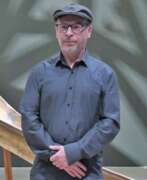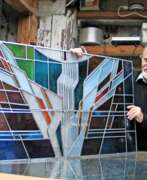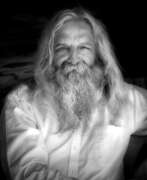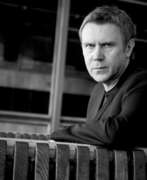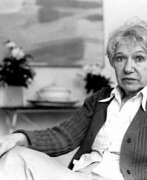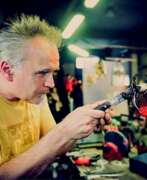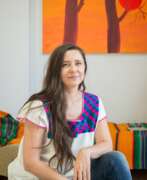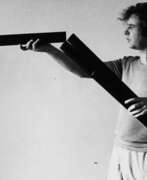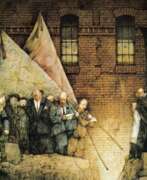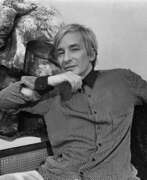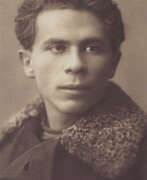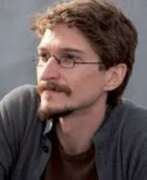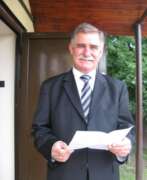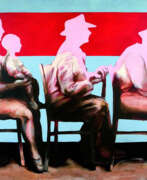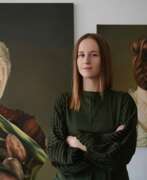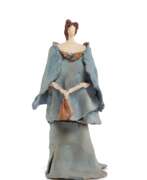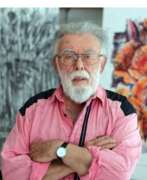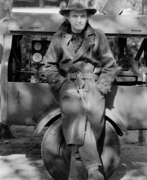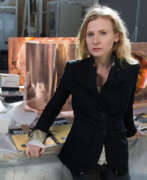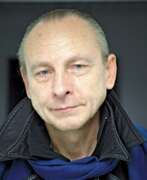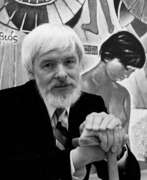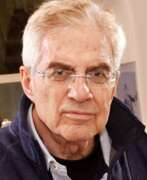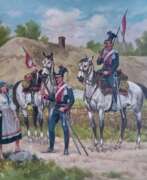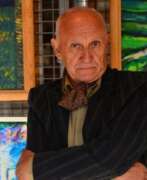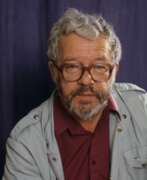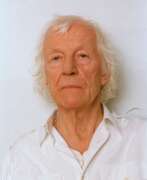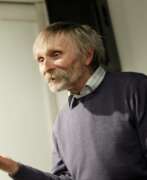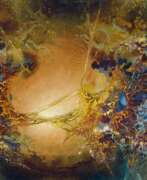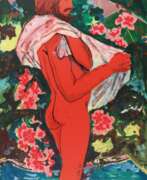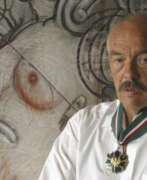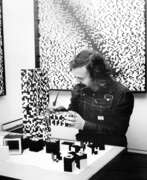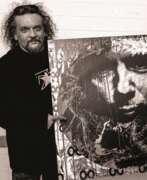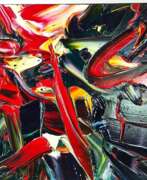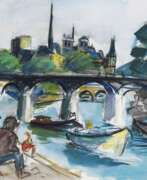Poland 21st century
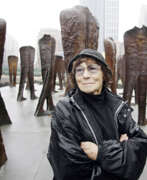

Magdalena Abakanowicz was a distinguished Polish artist, celebrated for her innovative use of textiles as a sculptural medium. Born on June 20, 1930, in Falenty, Poland, and passing away on April 20, 2017, in Warsaw, she carved out a significant place in the art world with her unique artistic expressions that often explored themes of crowd behavior, the trauma of war, and the individuality of the human condition.
Abakanowicz's education at the Academy of Fine Arts in Warsaw was a period of both artistic and personal growth, shaping her future works. During the 1960s, she began creating the "Abakans," large-scale textile sculptures that challenged conventional forms and expressed dynamic movement and vivid emotion. Her works often featured organic, tactile materials like burlap, resin, and wood, which added a profound depth and rawness to her sculptures.
Her sculptures are well-represented in major public installations and collections worldwide, including the National Museum in Wrocław, Poland, Grant Park in Chicago, and the National Gallery of Art Sculpture Garden in Washington, D.C. These pieces are not just art forms but are experiences, inviting viewers to explore deeper psychological and existential themes.
For those captivated by the profound impact and the stirring beauty of Magdalena Abakanowicz's work, subscribing for updates can provide regular insights and information on exhibitions and sales of her works at auctions. This is an excellent way to stay connected with the legacy of an artist who continuously redefined the boundaries of sculpture and installation art.
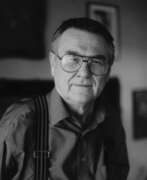

Zdzisław Beksiński was a Polish painter, photographer, and sculptor, specializing in the field of dystopian surrealism.
Beksiński made his paintings and drawings in what he called either a Baroque or a Gothic manner. His creations were made mainly in two periods. The first period of work is generally considered to contain expressionistic color, with a strong style of «utopian realism» and surreal architecture, like a doomsday scenario. The second period contained more abstract style, with the main features of formalism.
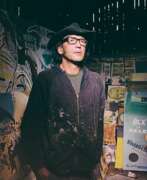

Andrzej Cisowski is a Polish multimedia artist and graphic artist.
Cisowski graduated from the Academy of Fine Arts in Warsaw and was initially associated with the Neue Wilde movement (Neo-Fauvism). Over time he developed his own individual style on the border of figurative painting and new expression. The artist also created paintings based on old photographs.
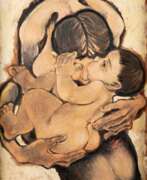

Hanna Dąbkowska-Skriabin is a Polish artist.
She graduated from the Academy of Fine Arts in Warsaw in the Department of Painting.
Hanna was very concerned about the fate of the human race, which is ruining itself with greed and short-sightedness. This is reflected in the works of the artist: many of her paintings are a timeless vision of a harsh world dominated by suffering and injustice. As if to protest against all this evil, Hanna Dąbkowska-Skriabin painted both paintings about love and beautiful landscapes. She is best known for her oil paintings. She has also mastered the techniques of ceramics and tapestry.
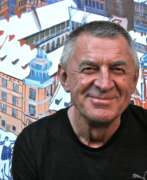

Edward Dwurnik was a Polish expressionist painter and graphic artist. Between 1963-1970 he studied painting, drawing and sculpture at the Academy of Fine Arts in Warsaw. He quickly became one of the most important figures of the Polish contemporary art scene.
Edward Dwurnik is best known for his large-scale paintings depicting everyday life, cityscapes and crowds of people. He often used bold, bright colours and strong black outlines to create his distinctive style. Many of his works depict the absurdity and contradictions of modern life in Poland and the struggles of ordinary people against political oppression and social injustice.
Throughout his career, Dwurnik's art has evolved and diversified, covering a wide range of techniques and themes. In addition to painting, he also worked in printmaking and drawing.
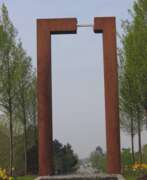

Kurt Fleckenstein is a German artist/sculptor associated with land art, minimal art and installation art. Fleckenstein was born in Heddesheim near Mannheim in Baden-Württemberg. His earlier career in landscape architecture, regional planning and horticultural art led to the establishment of several architectural studios in Germany, Austria and Poland. Since 2003 he has worked as a freelance artist with a focus on spatial objects and installations in exhibition centres and public open space. His provocative art form is designed to charm, irritate and challenge the viewer to question and compare “idealism with realism” on major social, cultural, economic and environmental issues. Fleckenstein now divides his home and work life between Mannheim, Germany and Wroclaw, Poland.
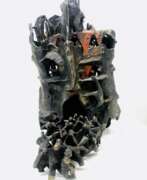

Tadeusz Foltyn was a Polish painter and sculptor.
In his works, the artist worked with various materials (bronze, iron and stone) to which he added paint. He achieved a dark and mysterious result, sometimes even causing destruction by depicting silhouettes, animals or buildings.


Stefan Gierowski was a Polish painter and an avant garde artist of post-war Poland.
For many years he was a professor at the Academy of Fine Arts in Warsaw where he earned numerous distinctions. He abandoned representational and realist painting midway through the 1950s and devoted himself entirely to abstract and optical effects. Acknowledging the concreteness of materials and colors, the artist, by his own admission, is mostly intrigued by the dual nature of light, how light is enclosed within a painting and yet somehow escapes it. According to the artist, each painting has a structure and a framework based on physical laws until it leaves the studio and becomes an enigma, at the disposition of the viewer, who discerns its content through a combination of emotional response and introspection. His paintings hang in major galleries in both Europe and the United States and in many countries throughout the world.
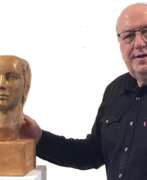

Andrzej Irzykowski is a Polish painter, sculptor and restorer living and working in Germany.
Andrzej studied at the Academy of Fine Arts in Gdansk after an apprenticeship as a mason in conservation workshops. As a freelance artist, Andrzej Irzykowski has been living and working in Germany for over 30 years.
The fusion of figurative and abstract forms has become a hallmark of Andrzej Irzykowski's work. One of his most recent exhibitions was entitled "Heads" - anthropomorphic sculptures in realist, surrealist and abstract expression. Irzykowski has exhibited his work in numerous solo and group exhibitions at home and abroad and has received many prizes and awards.


Malgosia Jankowska is a contemporary Polish and German artist. She studied painting in Berlin and Warsaw. Her works are distinguished by fine strokes, great depth and a high level of detail. Her classical compositions are effective and expressive. Malgosha has been living and working in Berlin since 2001. Since 2006, he has regularly exhibited his work, mainly in Germany.
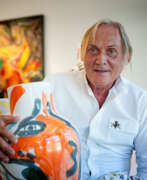

Peter Robert Keil is a German painter and sculptor.
In the beginnings of his artistic career, Peter Keil's style was influenced by German expressionism. However, his style changed visibly at the beginning of the 60s when he lived in Paris for a while and emerged in the city's nightlife. Keil increasingly parted with his realistic approach and developed a new, much more spontaneous and dynamic painting style. Since then, the use of intensive to lurid colours and the absence of realistic representation have become characteristic of his painting style. In his paintings, the colour is applied with quick brushstrokes and occasionally with impasto techniques and the images are additionally abstracted by the use of Graffiti elements. Keil prefers to paint human figures, portraits, big city scenes, landscapes and still life images of flowers. His emotional way of painting is mainly driven by a desire for freedom from social constraints and conventions. In the past 50 years, he has created numerous large- and small scale paintings in oil and mixed media on canvas but also some sculptures in wood and steel and a great number of majolicas.
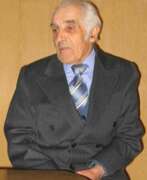

Konstantin Ivanovich Khoroshevich (Russian: Константин Иванович Хорошевич) was a Soviet and Belarusian artist of the second half of the twentieth and early twenty-first centuries. He is known as a painter who worked in the genres of landscape, portrait, still life.
Konstantin Khoroshevich during his career created more than 500 paintings, reflecting among other things significant events in the history of Belarus. In the last years of his life he worked on creating a gallery of portraits of cultural figures, his famous compatriots.
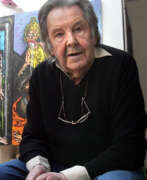

Ladislas Kijno is a French artist of Polish origin, one of the greatest abstractionists of the twentieth century.
In 1958 he moved to Paris and was accepted into the Salon de Mai committee. In Paris Kijno invented the technique of froissage - work with crumpled paper. During the same period the artist began experimenting with spray can paints, thus creating a synthesis between traditional painting techniques and modern inventions. Through the use of spray cans, Ladislas Kijno became known as one of the "spiritual fathers" of French street art.
In 1980 at the Venice Biennale Kijno exhibited 30 monumental paintings in the recognizable "crumpled" technique under the general title "Theater of Neruda".
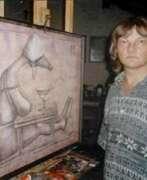

Ryszard Krynski is a Polish fantasy painter with contemporary themes.
He paints in the painstaking technique of glaze painting. Each picture of the artist surprises in his own way, conducting a dialogue between the past and the present, reality with a joke.
Ryszard Krynski has exhibited his works at numerous collective and individual exhibitions in Poland and abroad. He is a member of the Association of Polish Artists and Designers.
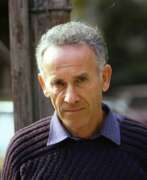

Moshe Kupferman (Hebrew: משה קופפרמן) was an Israeli painter known for his abstract, minimalist works. He was a major figure in Israeli art, and his work was recognized internationally.
Kupferman emigrated to Israel in 1945. He studied at the Bezalel Academy of Art and Design in Jerusalem and later in Paris. Kupferman's early works were influenced by the European modernist tradition, but he later developed a unique style that was characterized by minimalism and simplicity.
Kupferman's paintings often featured a limited palette of colors and simple geometric shapes arranged in a grid-like structure. He believed that his art should express a sense of spiritual calm and balance and sought to create works that were both visually striking and meditative.
Kupferman's work was exhibited extensively in Israel and around the world, and he received numerous awards and honors throughout his career. He was also a teacher and mentor to many younger Israeli artists.
Kupferman's legacy as one of Israel's leading abstract painters continues to influence contemporary Israeli art today.


Jan Lenica was a Polish graphic designer and animation director.
Lenica studied architecture at the Warsaw University of Technology. After graduating, however, he turned to graphic design and became one of Poland's best-known poster designers.
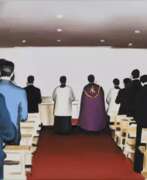

Marcin Maciejowski – is a contemporary Polish artist renowned for his humorous and candid observations of the everyday life. Painting from commercials, television series, newspapers, the internet, art history and his own experiences, Maciejowski is a keeper of our contemporary conditions.
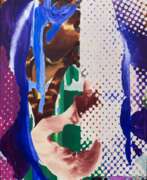

Piotr Makowski is a contemporary artist from Poland. He works primarily in painting and drawing, and his work often explores themes of memory, identity, and the passage of time.
Makowski studied at the Academy of Fine Arts in Gdańsk, Poland, and has since exhibited his work in numerous solo and group exhibitions in Poland and abroad. In 2013, he was awarded the Paszport Polityki award, one of the most prestigious awards for artists in Poland.
Overall, Makowski's work is marked by a keen sensitivity to the world around him, and an ability to capture the essence of his subjects with a subtle, understated touch.
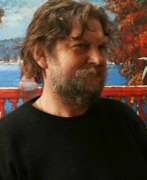

Adam Marczukiewicz is a Polish painter and graphic artist working in Krakow.
He graduated from the Academy of Fine Arts in Krakow at the Faculty of Graphic Arts, a member of the Association of Polish Artists.
Marczukiewicz works in different genres, but he has one recurring motif - prickly cacti. His paintings depict real events and views in a grotesque vision and are painted in rich vibrant colors.
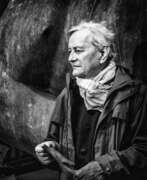

Igor Mitoraj, a renowned Polish sculptor, was celebrated for his unique approach to sculptural art, which combined classical techniques with modernist interpretations. Igor Mitoraj's artistic journey led him across Europe, studying under notable figures such as Tadeusz Kantor at the Krakow Academy of Fine Arts before expanding his horizons in Paris and Italy.
Igor Mitoraj's works are distinguished by their classical inspiration, often focusing on the human body's beauty and fragility. Yet, he introduced a contemporary twist by presenting his figures as fragmented or truncated, a nod to the imperfections and vulnerabilities inherent in human nature. This stylistic choice not only set him apart in the art world but also allowed him to explore deeper themes of human experience and existential reflection.
His sculptures, often large-scale, are displayed in public spaces across the globe, from the streets of European cities to the ruins of Pompeii, where his piece "Daedalus" stands as a testament to his artistic legacy. Igor Mitoraj's influence extends beyond public installations, with his works featured in various prestigious exhibitions and collections, illustrating a career marked by a commitment to exploring the human condition through art.
For art collectors and enthusiasts interested in Mitoraj's work, staying informed about upcoming sales and auction events can provide unique opportunities to acquire pieces by this influential artist. Subscribing to updates related to Igor Mitoraj can ensure you're always in the know about new offerings and events celebrating his artistic contributions.
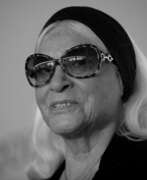

Natalia Lach-Lachowicz was a Polish artist who worked with paint, photography, drawing, performance, and video art. Sean O'Hagan, writing in The Guardian in 2017, described her as "a neglected early-1970s Polish-born pioneer of feminist avant garde image making".


Oh De Laval is the nickname of Olga Pothipirom, a contemporary artist who is half Polish and half Thai.
Oh De Laval's erotic expressionism conveys raw and wild emotions. Her figurative compositions are influenced by film noir and French new wave cinema, and seek to capture promiscuous psychological undercurrents. O de Laval's works are linked to hedonism, they call for pleasure in everything, including art.
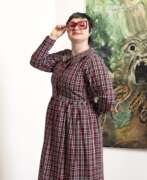

Paulina Olowska is a Polish painter and photographer, who also works in the field of performance and video-art, social action and applied art. The areas of her artistic explorations are modernist utopias and research on the work of 20th century artists, which she combines with her own creative practice to bring unjustly forgotten ideas back to life.
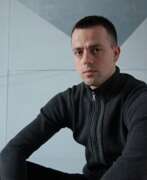

Zbigniew Rogalski is a Polish installation artist and photographer.
He is considered not just a painter, but a director of paintings, because he easily mixes painting and photography, taking advantage of both. As a result, Zbigniew Rogalski achieves illusion and optical effects in his creations, whether portrait or landscape.
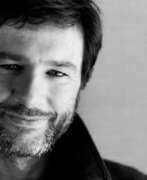

Wilhelm Sasnal is a Polish painter, photographer, poster artist, illustrator and filmmaker.
Sasnal graduated from the Academy of Fine Arts in Krakow, specializing in painting. Besides painting, he creates drawings in pencil and ink. The artist takes his subjects from everyday life, using images from media, propaganda and pop culture. Sasnal often paints from photographs and moves freely from figurative painting to abstraction.
Wilhelm Sasnal is considered one of the most prominent and internationally successful Polish contemporary artists.


Kama Sokolnicka is a Polish graphic artist, designer and collage artist.
She graduated from the Faculty of Graphic Arts at the Academy of Fine Arts in Wroclaw, Poland. Sokolnicka works in book design, painting, drawing, collage, and creates installations. She often uses the principles of collage and montage in her work, resulting in interesting juxtapositions.
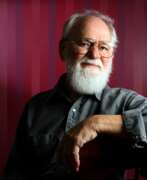

Julian Stanczak was a Polish-born American painter and printmaker who was one of the central figures in the development of Op art movement. The artist lived and worked in Seven Hills, Ohio with his wife, the sculptor Barbara Stanczak.


Feodor Szerbakow was a German painter. Szerbakow's painting style was decisively influenced by the Worpswede artist and impressionist Otto Modersohn. His landscape paintings often show foggy moor motifs and sunsets, but also lush floral still lifes. Later he also oriented himself to the painting style of Anton Burger.
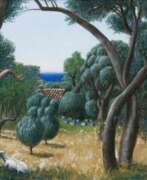

Klaus von Woyski was a German painter, graphic artist and restorer.
Von Woyski joined the Verband Bildender Künstler Kassel (Association of Visual Artists Kassel) and turned to non-objective painting at this time, numerous participations in exhibitions followed.
Since the entire family moved to Greece in 1970, Klaus von Woyski's painting style changed back to realism due to the new impressions of the landscape and the Greek light.


Ryszard Wasko is a Polish multimedia artist, curator, art organizer and educator who lives and works in Berlin.
He studied film and television production at the Łódź Film School. Wasko's work includes films, photographs, video works, paintings and drawings.
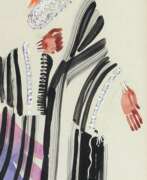

Pola Weizman was a Polish-born Israeli artist, known for her distinctive style of naive art and graphic design. Born in 1939 in Poland, Weizman survived the Holocaust and later emigrated to Israel, where she continued to develop her artistic skills. She studied at the Polytechnic College under notable instructors such as Narkis, Lipman, and Dan Karman, which significantly influenced her approach to art.
Weizman's art often depicted whimsical and vibrant scenes, reflecting the colorful street life of her adopted homeland, Israel. Her works were characterized by their simplicity and the joyful depiction of everyday life, which resonated with many art lovers and collectors. She had a notable one-woman exhibition at the Tel-Aviv Museum in 1970, which helped establish her reputation in the Israeli art scene.
Her artworks have been presented in various auctions, with her paintings often fetching prices that reflect her growing recognition in the art world. Her works are appreciated not only for their artistic value but also for their cultural and historical significance, capturing the spirit of a postwar Israeli society.
Weizman's legacy continues through the circulation of her artworks in galleries and auctions, offering collectors and art enthusiasts opportunities to own a piece of her unique artistic perspective. Her contributions to Israeli art are celebrated for their heartfelt portrayal of life and culture through the lens of a survivor and immigrant.
For those interested in exploring more about Pola Weizman's life and works, staying informed about upcoming auctions and exhibitions can provide valuable insights into her artistic journey and the impact of her works in the realms of naive art and Israeli cultural history.


Günter Weseler was a German artist. He became known for his “breath objects”, which make up the main part of his work. With these “New Species”, as he called his objects, Weseler was one of the most important German avant-garde artists of the 1960s and 1970s. At the beginning of his artistic career, Weseler kept coming back to painting. At times he turned to the fantastic, he painted cubist staggered houses, approached organic associations in abstract images with spatula work. In 1964, Günter Weseler began to study the phenomenon of breathing. In 1966 he went on to "visual shaping of the rhythm of breathing" with breathing balloons inflated with compressed air, about two meters in size, from which the air escaped again, and finally to the mechanically controlled fur objects. He placed his faceless, breathing fur creatures in the most varied of life situations. Depending on location, place and situation, they can completely change their character.
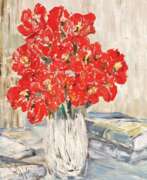

Bronisława Wilimowska is a Polish artist.
She studied painting in Paris at the Ecole des Beaux-Arts. Her works include subjects related to the war and post-war reconstruction of Poland, as well as landscapes from her many trips abroad. After the war, Wilimowska worked for the country's Ministry of Culture and Art and received many state awards.
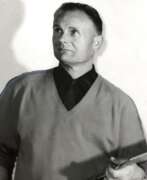

Stanisław Żółtowski was a Polish painter and graphic artist.
He studied painting at the Academy of Fine Arts in Warsaw, where much later he became a professor and teacher.
Żółtowski initial painting was dominated by the influence of Post-Impressionism, and later he moved decisively to Expressionism. He painted in various genres, but his "cosmic" theme, devoted to other worlds and the loneliness of man in them, stands out.
